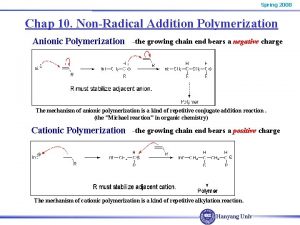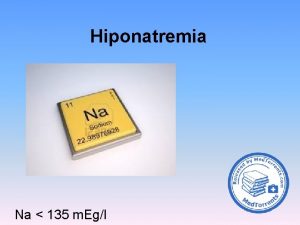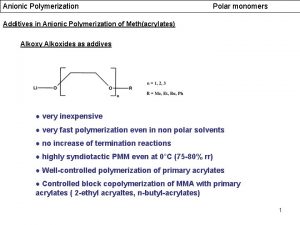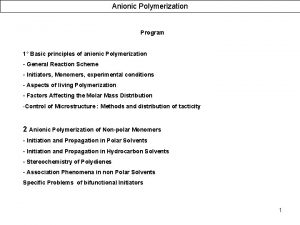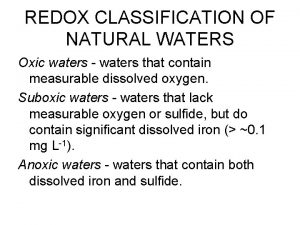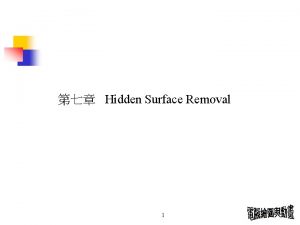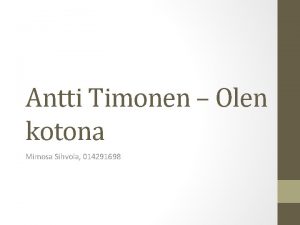REMOVAL OF ANIONIC COMPOUNDS FROM MINING WATERS Antti








- Slides: 8


REMOVAL OF ANIONIC COMPOUNDS FROM MINING WATERS Antti Häkkinen 1 & Mika Sillanpää 2 Lappeenranta University of Technology 1 Laboratory of Solid-Liquid Separation 2 Laboratory of Green Chemistry P. O. Box 20 53851 Lappeenranta 1 Antti. Hakkinen@lut. fi; +358 40 354 3218 2 Mika. Sillanpaa@lut. fi; +358 400 205 215

t

LUT Chemistry MINING & METALLURGY BIOREFINING MATERIALS PULP & PAPER CHEMISTRY & ANALYTICS WATER SEPARATION TECHNOLOGY APPLICATION AREAS PROCESS TECHNOLOGY RESEARCH LABORATORIES

Professors at LUT Chemistry Prof. Heli Siren Analytical methods Prof. Mika Mänttäri Membrane Technology Prof. Kaj Backfolkj Fiber and Paper Technology Prof. Marjatta Louhi. Kultanen Crystallisation Prof. Mika Sillanpää Green Chemistry Prof. Ilkka Turunen Process Intensification Prof. Andrzej Kraslawski Systems Engineering Prof. Tuomo Sainio Adsorption and Ion Exchange Prof. Antti Häkkinen Solid-liquid Separation Prof. Tuomas Koiranen Fluid Flow Technologies Prof. Eeva Jernström Process Integration

Project idea: Removal of anionic compounds from mining waters • Water management issues related to mining industry have attracted a lot of attention lately • environmental concerns • lack of raw water • possible recovery of valuables from waste waters >> There is a great need to create technologies that would enable the recycling of process waters in an efficient way • One of the most significant factors related to recycling of process waters is the behaviour and accumulation of anionic compounds in the process >> Efficient and economical method for removing the anions from the water cycle is required

Electrochemical methods • • Electrochemical methods, which include electrocoagulation, electro-oxidation and electroreduction, can provide alternative ways for industrial waste water treatment and these methods have attracted a lot of interest especially during the last decade. Electrochemical methods typically require some pre-treatment of process waters as well as post-treatment for removing the fine solids: • Clarification by sedimentation, flocculation and filtration technologies or a suitable combination of these. >> The aim of this project is to study the potential of electrochemical technologies together with traditional sedimentation, flotation and filtration techniques in the treatment of wastewaters of mining industry. • The main target is to find combined techniques which are the most suitable for removal of anions and find optimized multi stage solutions from separation to dewatering for minimizing the environmental load of waste waters.

Content of the project • Treatment and purification of process waters: • Pre-treatment by traditional techniques (flotation, sedimentation, flocculation, filtration, etc. ) • Electrochemical treatment for removing the dissolved anions • Post-treatment for removing the created solids • Evaluation of water balances of mining and ore enrichment operations: • Simulations and calculations based on real process data • Comparison of different alternatives for recycling of process waters (short/long cycles) • Economical analysis of different alternatives: • Different combinations of electrochemical techniques and traditional methods
